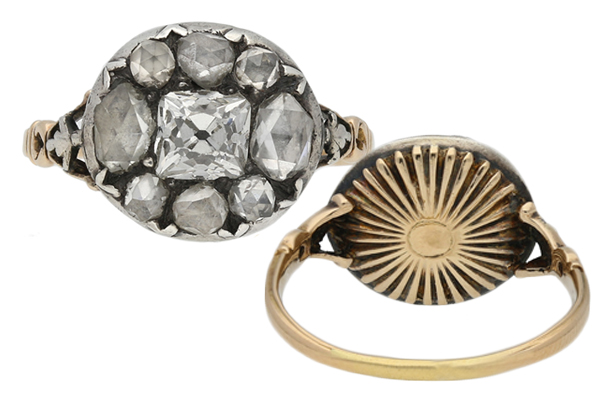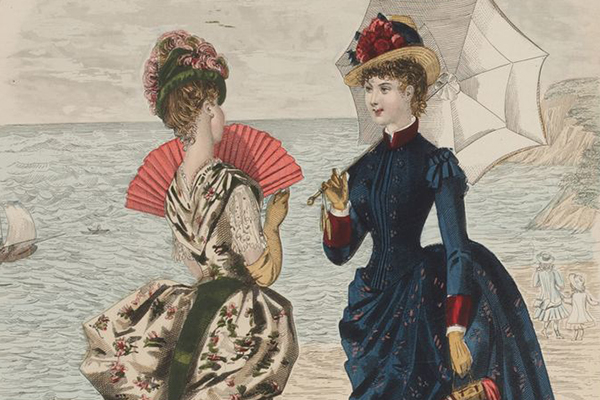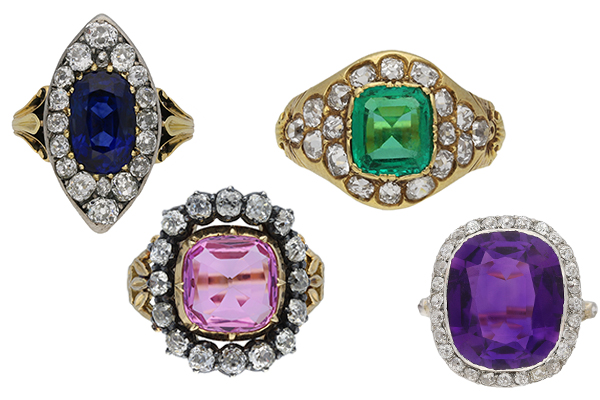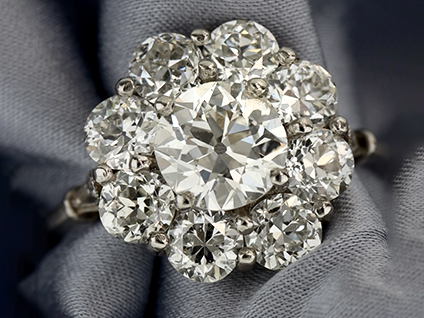14 DAY MONEY-BACK GUARANTEE - FREE WORLDWIDE DELIVERY
SAME-DAY LONDON DELIVERY


By Harriet Guildford
A cluster ring is a style of ring that features a myriad of gemstones in a wide variety of designs, often creating the appearance of a larger, more elaborate piece. The history of cluster rings dates back several centuries, and their popularity has evolved over time.
.jpg)
The origins of cluster rings can be traced back to the Georgian era. During this period, intricate and elaborate designs were in vogue. Cluster rings were often crafted with a central gemstone surrounded by smaller diamonds or gemstones. As the technology was not yet invented to heat platinum to a high enough temperature to work with, the only white metal we see in this era is silver. Therefore, you often see cluster rings with a yellow or rose gold band, but the gemstones set within silver settings.

Silver & Yellow Gold Diamond Cluster Ring Circa 1770
Note the detailing on the closed back setting
Berganza Collection
When the ring was first created, these silver settings would be as bright as platinum in appearance, however, as silver naturally oxidises over time, a darkened effect occurs. Although silver can be polished to appear bright again, the distinctive oxidisation is a remarkable and cherished feature for many Georgian jewellery lovers.
In this era, rose-cut diamonds were frequently used in cluster rings. As one of the earliest diamonds cuts, the rose-cut is defined by its rounded outline and multiple triangular facets. The rose-cut exudes a more subtle, sultry lustre than other cuts, giving cluster rings of the Georgian period more of an ethereal scintillation.

Georgian Diamond Cluster Circa 1770
Set With Rose Cut Diamonds
Berganza Collection

As we moved into the Victorian era, Queen Victoria herself certainly influenced jewellery trends during her reign. Cluster rings continued to be popular during this time, and designs became more intricate. The use of coloured gemstones, such as sapphires and rubies, in combination with diamonds, became prevalent. Whilst rose gold and silver were used in this era, yellow gold was particularly favoured for its warmth and richness.

A selection of Victorian Clusters Circa 1830-1900
Berganza Collection
We often see cluster designs in this period crafted out of yellow gold, featuring elaborate and detailed designs. The settings were crafted with intricate metalwork, such as scrollwork and other decorative patterns, creating an ornate, luxurious appearance.
.jpg)
Known as ‘the pretty period of jewellery’, the Edwardian period marked a transition from the ornate and elaborate styles of the Victorian Era, to a more delicate and refined aesthetic. Intricate, light openwork was made possible by the use of platinum, which had only just become widely used in jewellery at the turn of the 20th century.

Edwardian Diamond Cluster Circa 1910
A Fine Example Of Platinum Lace
Berganza Collection
This meant that beautiful settings known as platinum lace could be created. Large settings that were airy and light were also bold, yet delicate in feeling. Floral, nature inspired motifs were popular, oozing f
After the tumultuous years of World War II, jewellery designs became more streamlined and focused on simplicity. Cluster rings, however, remained a popular choice for those seeking a more ornate and glamorous style.
Cluster rings are valued for their timeless elegance and versatility, making them a popular choice for various occasions, from engagements to everyday wear. The style has evolved over the centuries, adapting to the changing tastes and design preferences of each era. Discover our collection online or in person today, to find the perfect cluster ring for you!

Connect with us
Signs up for regular emails on our new acquisitions, news and features: